In Istanbul, few structures command attention like the Galata Tower. Rising above the rooftops of Karaköy, this medieval stone giant isn’t just another tourist stop-it’s the city’s silent storyteller, watching over centuries of trade, war, music, and daily life. If you’ve ever stood on the rooftop terrace of a café in Beyoğlu and looked across the Golden Horn, you’ve seen it: the cylindrical silhouette, crowned with its conical roof, piercing the skyline like a needle through fabric. For locals, it’s not just a landmark-it’s a compass. When you’re lost in the narrow alleys of Beyoğlu, the tower points you home. When you’re celebrating a victory, it’s the first thing you spot from the Bosphorus ferry. And when you’re trying to explain to a visitor why Istanbul feels alive in every corner, you point to the Galata Tower.
More Than a Tower: A Witness to Empires
Built in 1348 by the Genoese as the Christea Turris-Tower of Christ-it was never meant to be a symbol of Ottoman power. But history doesn’t care about intentions. When Mehmed the Conqueror took Constantinople in 1453, he didn’t tear it down. He kept it. He used it as a watchtower, then a prison, then a fire lookout. Ottoman sultans knew its value: from its top, you could see smoke rising from fires across the city, track enemy ships entering the Golden Horn, and even spot the first flickers of the Grand Bazaar’s morning bustle. Today, the tower still serves as a lookout-but now, it’s for Instagram posts, proposals, and sunset selfies.
Its height-67 meters-isn’t the tallest in the world, but in a city where minarets outnumber elevators, it stands out. Unlike the slender, ornate spires of Sultanahmet, Galata Tower is rugged, functional, and unapologetically medieval. Its thick stone walls, built without mortar, have survived earthquakes, fires, and decades of urban sprawl. Walk around its base and you’ll notice the uneven bricks-each one placed by hand, each one bearing the weight of time. This isn’t a restored theme park attraction. It’s a living relic.
The View That Changes Everything
Ask any Istanbul resident what the best view in the city is, and most will say: from the Galata Tower terrace at golden hour. Not the Bosphorus Bridge. Not the Topkapı Palace gardens. Not even the rooftop bars of Nişantaşı. The tower gives you the full picture: the Blue Mosque’s domes to the south, the modern skyline of Levent and Maslak to the north, the winding alleys of Eminönü below, and the endless stretch of the Golden Horn, dotted with ferries that still carry workers to their jobs in Kadıköy.
Locals know the trick: go just before sunset. The lines at the ticket counter shorten after 5 p.m., and the light turns the stone walls a soft amber. You’ll see old men selling simit from carts near the entrance, couples taking photos with their phones propped on selfie sticks, and tourists from Germany, Japan, and Brazil all standing shoulder to shoulder, silent, watching the sun dip behind the minarets. At that moment, you don’t feel like a visitor. You feel like part of the rhythm.
Pro tip: Skip the overpriced café on the top floor. Bring your own çay from a nearby shop-there’s a çaydanlık vendor just outside the tower’s gate who sells tea in small glasses for 12 lira. Sit on the stone ledge, sip slowly, and watch the call to prayer echo from the nearby İstanbul Üniversitesi Camii. The tower doesn’t just show you the city-it lets you hear it.
Galata Tower and the Soul of Karaköy
The tower doesn’t exist in isolation. It’s the anchor of Karaköy, a district that’s been Istanbul’s crossroads for 600 years. Once the port where Genoese merchants traded silk and spices, today Karaköy is where Turkish hipsters sip cold brew next to old men playing backgammon at Çiçek Pasajı. The tower looms over art galleries, vintage bookshops, and the historic Galata Mevlevihanesi, where the Whirling Dervishes once spun in spiritual trance.
Walk down the hill from the tower and you’ll hit the old bank buildings turned into design studios, the neon-lit bars of Bankalar Caddesi, and the scent of grilled midye dolma drifting from street carts. At night, the tower is lit in soft gold, reflecting off the water like a beacon. Locals say if you stand at the end of the Galata Bridge at midnight and look up, the tower still guides sailors home-even though no ships dock there anymore.
And then there’s the music. In 1918, the first radio broadcast in Turkey came from the top of Galata Tower. Today, the tower’s interior hosts jazz nights, acoustic sets, and poetry readings. You’ll find local bands playing covers of Selda Bağcan next to international artists. The tower isn’t just history-it’s still making culture.
Practical Tips for Locals and Visitors Alike
If you’re a resident of Istanbul, you’ve probably passed the tower dozens of times without stopping. Here’s why you should go again:
- Buy tickets online-the official site sells timed entries to avoid the 45-minute waits. Walk-ins often wait longer, especially on weekends.
- Go on a weekday-Tuesday and Wednesday afternoons are quietest. You’ll have the terrace almost to yourself.
- Bring a light jacket-even in July, the wind at the top can be chilly. Istanbul’s sea breeze doesn’t care if you’re wearing shorts.
- Don’t skip the basement-the small museum on the ground floor has original construction tools, Ottoman-era maps, and a 19th-century telescope used to track ships. It’s free with your ticket.
- Combine it with a walk-head down to the İstiklal Caddesi metro station, grab a lokma from Ali Muhiddin Hacı Bekir, then take the tram to Taksim. You’ve just done a perfect Istanbul afternoon.
For tourists: skip the guided tour. The audio guide on your phone (available in Turkish, English, German, and Arabic) is just as good. And if you’re staying in Sultanahmet, take the T1 tram to Karaköy instead of a taxi-it’s cheaper, faster, and you’ll pass through the real Istanbul, not the postcard version.
Why It Still Matters
In a city where new skyscrapers rise every year and old neighborhoods are rebranded as ‘lifestyle districts,’ the Galata Tower refuses to change. It doesn’t have a Starbucks. It doesn’t sell branded merchandise. It doesn’t need to. It stands because it’s real. It’s the one place where a 70-year-old widow from Üsküdar, a young architect from Ankara, and a French expat living in Beşiktaş all pause, look up, and feel the same thing: awe.
It’s not just a tower. It’s the quiet heartbeat of Istanbul. And if you’ve ever stood on its terrace, watching the sun paint the Bosphorus in shades of orange and violet, you know it’s not just a landmark-it’s home.
Is the Galata Tower open every day?
Yes, the Galata Tower is open daily from 9 a.m. to 11 p.m., with last entry at 10:30 p.m. It stays open later in summer months (May to September) to accommodate sunset visitors. There are no closures for holidays, though it gets extremely crowded on weekends and during national celebrations like Republic Day.
How much does it cost to enter Galata Tower?
As of 2025, the entrance fee is 550 Turkish lira for adults, 275 lira for students with ID, and free for children under 6. You can buy tickets online through the official website or at the ticket booth on-site. Many Istanbul Kart holders get a 20% discount if they use their card at the automated kiosk.
Can you see the Bosphorus from Galata Tower?
You can’t see the full width of the Bosphorus from the top, but you can clearly see the northern end of the Golden Horn where it meets the Bosphorus Strait. The Dolmabahçe Palace and the Üsküdar skyline are visible on the opposite shore. For a full Bosphorus view, head to the nearby Galata Bridge or take a ferry from Karaköy to Üsküdar.
Is the Galata Tower accessible for people with mobility issues?
The tower has an elevator that goes to the observation deck, making it fully accessible. However, the entrance ramp is steep, and the path from the tram stop to the tower involves cobblestones and steps. Wheelchair users are advised to enter via the side entrance on Galata Kulesi Caddesi, where staff can assist with access. The basement museum and gift shop are also wheelchair-friendly.
What’s the best time of year to visit Galata Tower?
Spring (April-June) and early autumn (September-October) are ideal. The weather is mild, the crowds are thinner, and the light is perfect for photography. Summer (July-August) is hot and packed, especially on weekends. Winter can be windy and rainy, but if you go on a clear day, you’ll have the tower almost to yourself-and the snow-dusted skyline is unforgettable.

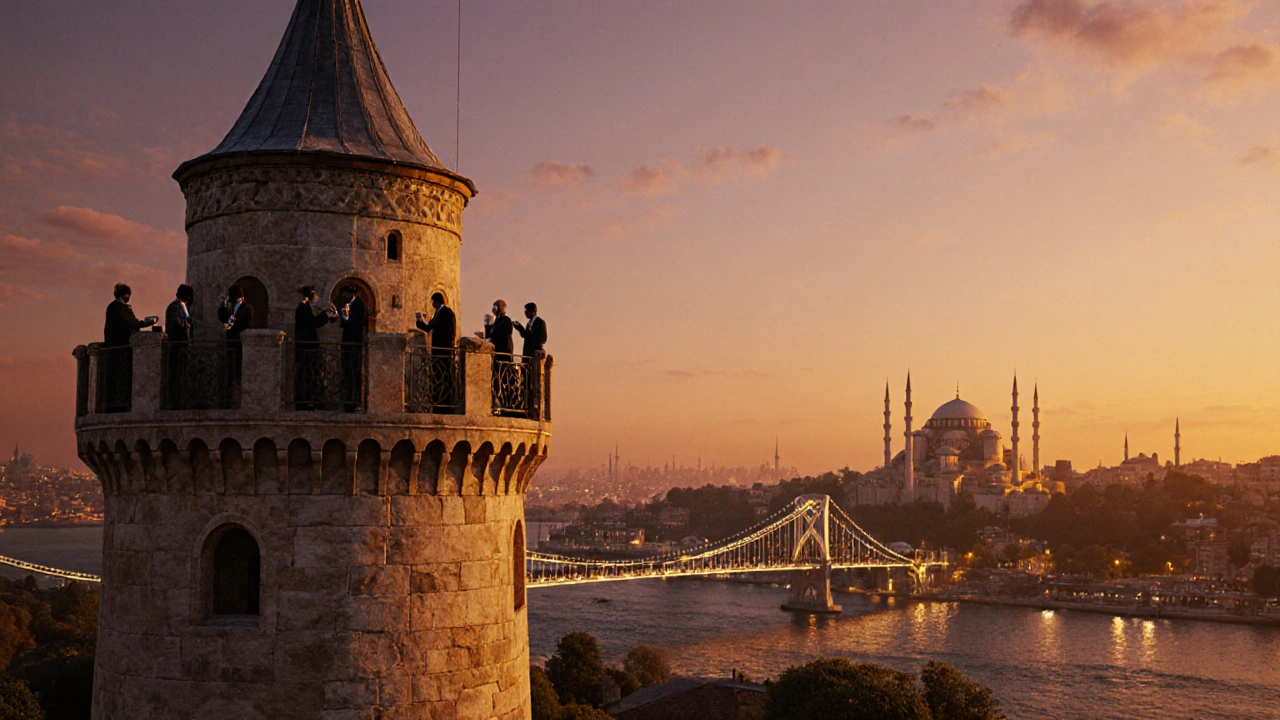
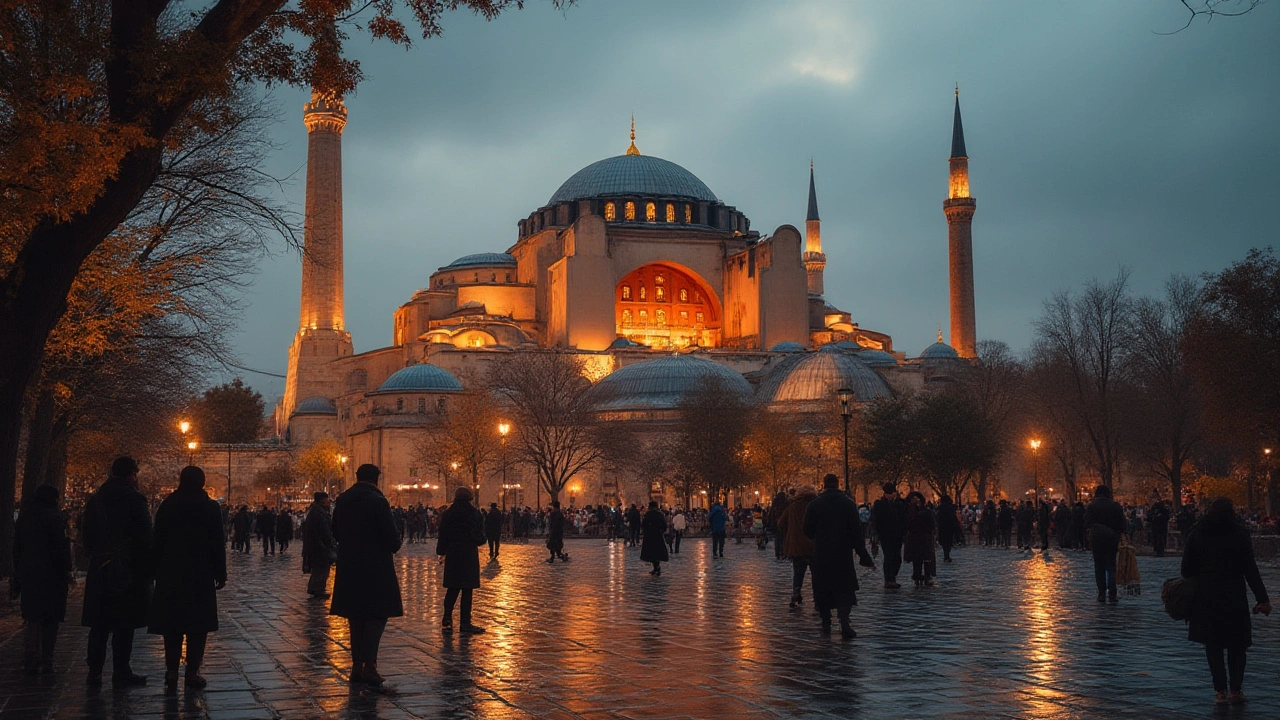
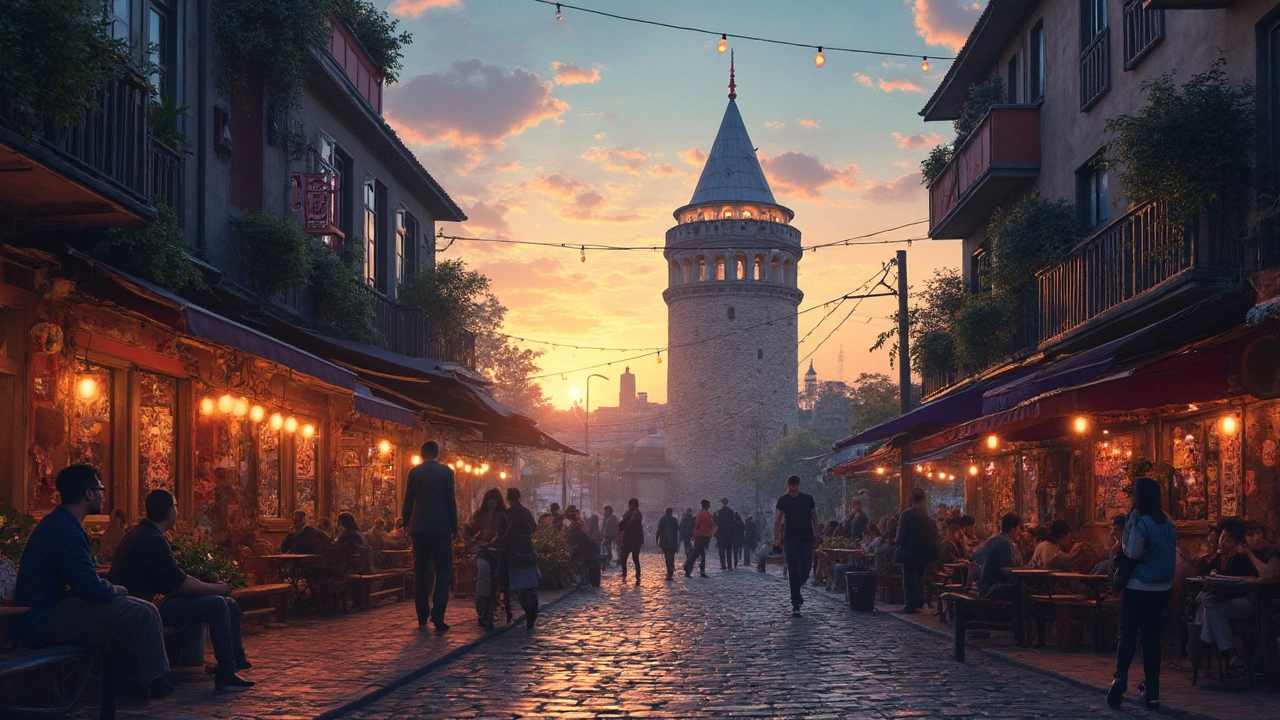





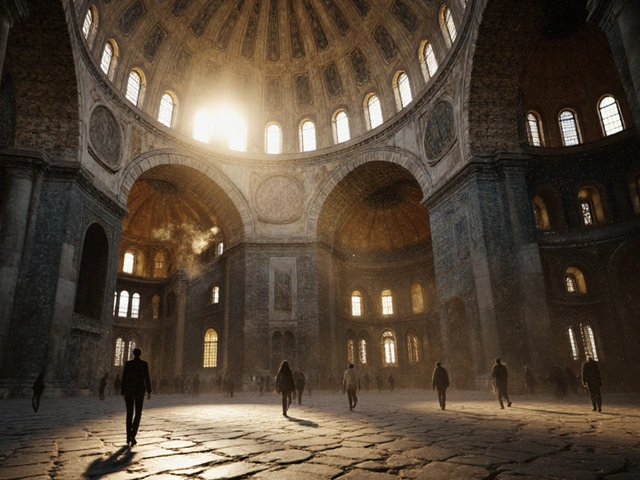


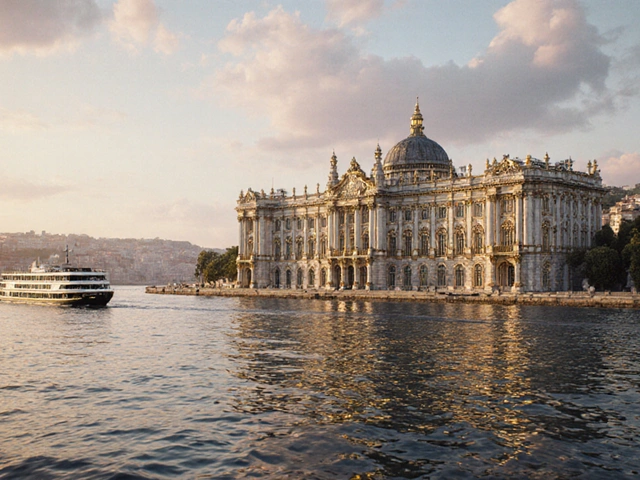

6 Comments
this tower is just a relic. why do we even care about old stone junk? we got skyscrapers in NYC that actually mean something. this is just a tourist trap with overpriced tea.
OMG THIS IS THE MOST BEAUTIFUL THING I’VE EVER SEEN!!! I JUST BOOKED MY FLIGHT TO ISTANBUL TOMORROW!! IF YOU’RE READING THIS AND YOU HAVEN’T BEEN TO GALATA TOWER YET-GO. NOW. YOUR SOUL WILL THANK YOU. 🌅✨
Turks still can't fix a roof without hiring Italians. This tower was built by Genoese. The Ottomans just stole it and called it theirs. Classic.
I’ve been to 87 countries and this is the ONLY place where history actually still breathes. The elevator? Broken in 2019. They fixed it with duct tape and prayers. That’s why it’s real. You think the Eiffel Tower has soul? Nah. It’s just metal. This? This is living. I cried. I didn’t even know I could cry over a tower.
Minor grammar note: 'simit' should be italicized when used in English text, like 'çay' and 'midye dolma'. Also, 'İstanbul Üniversitesi Camii' is correctly capitalized with the dotless İ. Small things, but they matter. Otherwise, this is beautifully written.
The Galata Tower is a perfect example of urban palimpsest-layered historical strata embedded in architectural form. From Genoese maritime hegemony to Ottoman surveillance infrastructure, then to postcolonial cultural reclamation, it’s a non-linear narrative encoded in stone. The jazz nights? That’s sonic archaeology. The tea vendor? A micro-economy of affective resistance against commodified tourism. This isn’t heritage-it’s a living algorithm of collective memory.